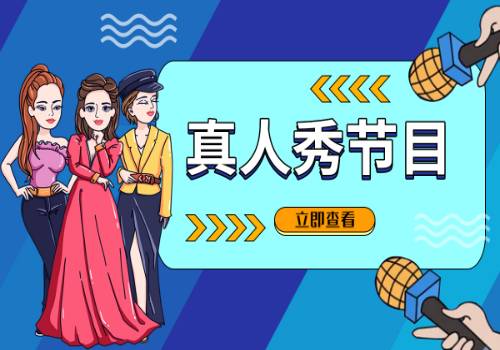1、簡介
SpringBoot不僅繼承了Spring框架原有的優秀特性,而且還通過簡化配置來進一步簡化了Spring應用的整個搭建和開發過程。
在Spring-Boot項目開發中,存在著本模塊的代碼需要訪問外面模塊接口,或外部url鏈接的需求, 比如在apaas開發過程中需要封裝接口在接口中調用apaas提供的接口(像發起流程接口submit等等)下面也是提供了三種方式(不使用dubbo的方式)供我們選擇
推薦一個開源免費的 Spring Boot 實戰項目:
 (相關資料圖)
(相關資料圖)
https://github.com/javastacks/spring-boot-best-practice
2、方式一:使用原始httpClient請求
/* * @description get方式獲取入參,插入數據并發起流程 * @author lyx * @date 2022/8/24 16:05 * @params documentId * @return String *///@RequestMapping("/submit/{documentId}")public String submit1(@PathVariable String documentId) throws ParseException { //此處將要發送的數據轉換為json格式字符串 Map map =task2Service.getMap(documentId); String jsonStr = JSON.toJSONString(map, SerializerFeature.WRITE_MAP_NULL_FEATURES,SerializerFeature.QuoteFieldNames); JSONObject jsonObject = JSON.parseObject(jsonStr); JSONObject sr = task2Service.doPost(jsonObject); return sr.toString();}/* * @description 使用原生httpClient調用外部接口 * @author lyx * @date 2022/8/24 16:08 * @params date * @return JSONObject */public static JSONObject doPost(JSONObject date) { String assessToken="eyJ0eXAiOiJKV1QiLCJhbGciOiJIUzUxMiJ9.eyJ4ZGFwYXBwaWQiOiIzNDgxMjU4ODk2OTI2OTY1NzYiLCJleHAiOjE2NjEyMjY5MDgsImlhdCI6MTY2MTIxOTcwOCwieGRhcHRlbmFudGlkIjoiMzAwOTgxNjA1MTE0MDUyNjA5IiwieGRhcHVzZXJpZCI6IjEwMDM0NzY2MzU4MzM1OTc5NTIwMCJ9.fZAO4kJSv2rSH0RBiL1zghdko8Npmu_9ufo6Wex_TI2q9gsiLp7XaW7U9Cu7uewEOaX4DTdpbFmMPvLUtcj_sQ"; CloseableHttpClient client = HttpClients.createDefault(); // 要調用的接口url String url = "http://39.103.201.110:30661 /xdap-open/open/process/v1/submit"; HttpPost post = new HttpPost(url); JSONObject jsonObject = null; try { //創建請求體并添加數據 StringEntity s = new StringEntity(date.toString()); //此處相當于在header里頭添加content-type等參數 s.setContentType("application/json"); s.setContentEncoding("UTF-8"); post.setEntity(s); //此處相當于在Authorization里頭添加Bear token參數信息 post.addHeader("Authorization", "Bearer " +assessToken); HttpResponse res = client.execute(post); String response1 = EntityUtils.toString(res.getEntity()); if (res.getStatusLine() .getStatusCode() == HttpStatus.SC_OK) { // 返回json格式: String result = EntityUtils.toString(res.getEntity()); jsonObject = JSONObject.parseObject(result); } } catch (Exception e) { throw new RuntimeException(e); } return jsonObject;} 3、方式二:使用RestTemplate方法
Spring-Boot開發中,RestTemplate同樣提供了對外訪問的接口API,這里主要介紹Get和Post方法的使用。
Get請求
提供了getForObject、getForEntity兩種方式,其中getForEntity如下三種方法的實現:
Get--getForEntity,存在以下兩種方式重載
1.getForEntity(Stringurl,Class responseType,Object…urlVariables)2.getForEntity(URI url,Class responseType)Get--getForEntity(URI url,Class responseType)
//該方法使用URI對象來替代之前的url和urlVariables參數來指定訪問地址和參數綁定。URI是JDK java.net包下的一個類,表示一個統一資源標識符(Uniform Resource Identifier)引用。參考如下:RestTemplate restTemplate=new RestTemplate();UriComponents uriComponents=UriComponentsBuilder.fromUriString("http://USER-SERVICE/user?name={name}").build().expand("dodo").encode();URI uri=uriComponents.toUri();ResponseEntityresponseEntity=restTemplate.getForEntity(uri,String.class).getBody();Get--getForEntity(Stringurl,Class responseType,Object…urlVariables)
//該方法提供了三個參數,其中url為請求的地址,responseType為請求響應body的包裝類型,urlVariables為url中的參數綁定,該方法的參考調用如下:// http://USER-SERVICE/user?name={name)RestTemplate restTemplate=new RestTemplate();Mapparams=new HashMap<>();params.put("name","dada"); //ResponseEntityresponseEntity=restTemplate.getForEntity("http://USERSERVICE/user?name={name}",String.class,params);Get--getForObject,存在以下三種方式重載
1.getForObject(String url,Class responseType,Object...urlVariables)2.getForObject(String url,Class responseType,Map urlVariables)3.getForObject(URI url,Class responseType)getForObject方法可以理解為對getForEntity的進一步封裝,它通過HttpMessageConverterExtractor對HTTP的請求響應體body內容進行對象轉換,實現請求直接返回包裝好的對象內容。
Post 請求
Post請求提供有postForEntity、postForObject和postForLocation三種方式,其中每種方式都有三種方法,下面介紹postForEntity的使用方法。
Post--postForEntity,存在以下三種方式重載
1.postForEntity(String url,Object request,Class responseType,Object... uriVariables) 2.postForEntity(String url,Object request,Class responseType,Map uriVariables) 3.postForEntity(URI url,Object request,Class responseType)如下僅演示第二種重載方式
/* * @description post方式獲取入參,插入數據并發起流程 * @author lyx * @date 2022/8/24 16:07 * @params * @return */@PostMapping("/submit2")public Object insertFinanceCompensation(@RequestBody JSONObject jsonObject) { String documentId=jsonObject.get("documentId").toString(); return task2Service.submit(documentId);}/* * @description 使用restTimeplate調外部接口 * @author lyx * @date 2022/8/24 16:02 * @params documentId * @return String */public String submit(String documentId){ String assessToken="eyJ0eXAiOiJKV1QiLCJhbGciOiJIUzUxMiJ9.eyJ4ZGFwYXBwaWQiOiIzNDgxMjU4ODk2OTI2OTY1NzYiLCJleHAiOjE2NjEyMjY5MDgsImlhdCI6MTY2MTIxOTcwOCwieGRhcHRlbmFudGlkIjoiMzAwOTgxNjA1MTE0MDUyNjA5IiwieGRhcHVzZXJpZCI6IjEwMDM0NzY2MzU4MzM1OTc5NTIwMCJ9.fZAO4kJSv2rSH0RBiL1zghdko8Npmu_9ufo6Wex_TI2q9gsiLp7XaW7U9Cu7uewEOaX4DTdpbFmMPvLUtcj_sQ"; RestTemplate restTemplate = new RestTemplate(); //創建請求頭 HttpHeaders httpHeaders = new HttpHeaders(); //此處相當于在Authorization里頭添加Bear token參數信息 httpHeaders.add(HttpHeaders.AUTHORIZATION, "Bearer " + assessToken); //此處相當于在header里頭添加content-type等參數 httpHeaders.add(HttpHeaders.CONTENT_TYPE,"application/json"); Map map = getMap(documentId); String jsonStr = JSON.toJSONString(map); //創建請求體并添加數據 HttpEntity 4、方式三:使用Feign進行消費
在maven項目中添加依賴
org.springframework.cloud spring-cloud-starter-feign 1.2.2.RELEASE 啟動類上加上@EnableFeignClients
@SpringBootApplication@EnableFeignClients@ComponentScan(basePackages = {"com.definesys.mpaas", "com.xdap.*" ,"com.xdap.*"})public class MobilecardApplication { public static void main(String[] args) { SpringApplication.run(MobilecardApplication.class, args); } }此處編寫接口模擬外部接口供feign調用外部接口方式使用
定義controller
@AutowiredPrintService printService;@PostMapping("/outSide")public String test(@RequestBody TestDto testDto) { return printService.print(testDto);}定義service
@Servicepublic interface PrintService { public String print(TestDto testDto);}定義serviceImpl
public class PrintServiceImpl implements PrintService { @Override public String print(TestDto testDto) { return "模擬外部系統的接口功能"+testDto.getId(); }}構建Feigin的Service
定義service
//此處name需要設置不為空,url需要在.properties中設置@Service@FeignClient(url = "${outSide.url}", name = "service2")public interface FeignService2 { @RequestMapping(value = "/custom/outSide", method = RequestMethod.POST) @ResponseBody public String getMessage(@Valid @RequestBody TestDto testDto);}定義controller
@AutowiredFeignService2 feignService2;//測試feign調用外部接口入口@PostMapping("/test2")public String test2(@RequestBody TestDto testDto) { return feignService2.getMessage(testDto);}postman測試
此處因為我使用了所在項目,所以需要添加一定的請求頭等信息,關于Feign的請求頭添加也會在后續補充
補充如下:
添加Header解決方法
將token等信息放入Feign請求頭中,主要通過重寫RequestInterceptor的apply方法實現
定義config
@Configurationpublic class FeignConfig implements RequestInterceptor { @Override public void apply(RequestTemplate requestTemplate) { //添加token requestTemplate.header("token", "eyJ0eXAiOiJKV1QiLCJhbGciOiJIUzUxMiJ9.eyJ4ZGFwYXBwaWQiOiIzNDgxMjU4ODk2OTI2OTY1NzYiLCJleHAiOjE2NjEyMjY5MDgsImlhdCI6MTY2MTIxOTcwOCwieGRhcHRlbmFudGlkIjoiMzAwOTgxNjA1MTE0MDUyNjA5IiwieGRhcHVzZXJpZCI6IjEwMDM0NzY2MzU4MzM1OTc5NTIwMCJ9.fZAO4kJSv2rSH0RBiL1zghdko8Npmu_9ufo6Wex_TI2q9gsiLp7XaW7U9Cu7uewEOaX4DTdpbFmMPvLUtcj_sQ"); }}定義service
@Service@FeignClient(url = "${outSide.url}",name = "feignServer", configuration = FeignDemoConfig.class)public interface TokenDemoClient { @RequestMapping(value = "/custom/outSideAddToken", method = RequestMethod.POST) @ResponseBody public String getMessage(@Valid @RequestBody TestDto testDto);}定義controller
//測試feign調用外部接口入口,加上token@PostMapping("/testToken")public String test4(@RequestBody TestDto testDto) { return tokenDemoClient.getMessage(testDto);}版權聲明:本文為CSDN博主「Chelsea」的原創文章,遵循CC 4.0 BY-SA版權協議,轉載請附上原文出處鏈接及本聲明。原文鏈接:https://blog.csdn.net/Chelsea/article/details/126689495
近期熱文推薦:
1.1,000+ 道 Java面試題及答案整理(2022最新版)
2.勁爆!Java 協程要來了。。。
3.Spring Boot 2.x 教程,太全了!
4.別再寫滿屏的爆爆爆炸類了,試試裝飾器模式,這才是優雅的方式!!
5.《Java開發手冊(嵩山版)》最新發布,速速下載!
覺得不錯,別忘了隨手點贊+轉發哦!
關鍵詞:










 營業執照公示信息
營業執照公示信息



